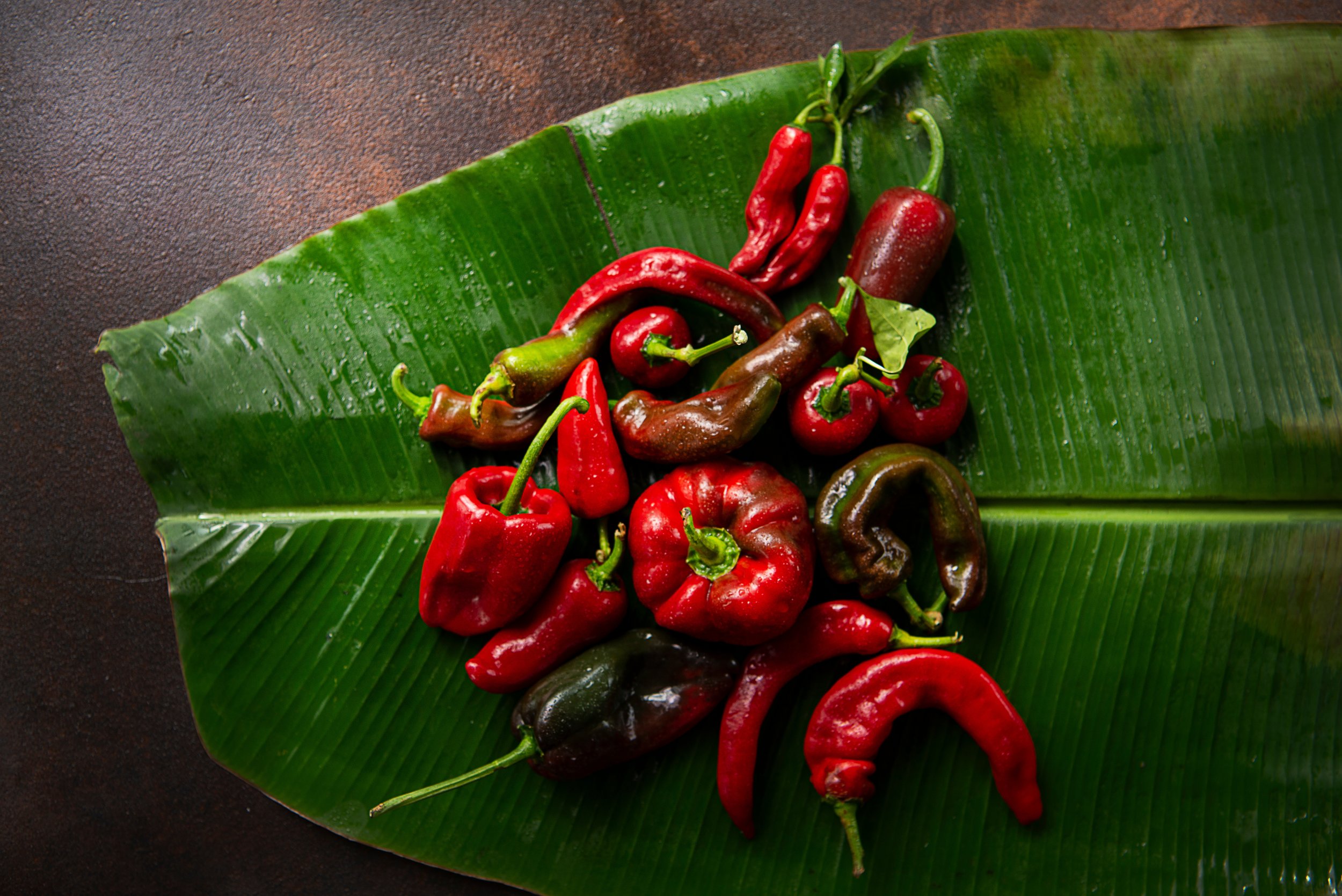
Chili Pepper
Of the genus Capsicum
Therapeutics
Analgesic (pain relieving although initially can be pain inducing)
capsaicin in particular has shown: antifungal properties, anti-inflammatory, antioxidant, cardiovascular tonic, gastroprotective
Small to medium flowering shrub with green stems and oval leaves. Fruits are elongated and red, orange, yellow, and green in color.
Native to Mexico and now cultivated across North America, Asia, and Europe, it grows well in sunny conditions with moist but not water-logged soil.
Harvest the peppers once they have fully matured and developed their color.
Plant Anatomy & Growth
Color
Red, orange to brown, yellow and green premature fruits, green stems
Taste
Pungent, spicy
Scent
pungent, the seeds more so than the fruit, aromatic, warming
Constituents
Capsaicin (nonpolar-oil soluble), carotenoids, steroidal saponins in seed and root
Uses
You can use chili peppers topically and internally, and they taste great too!
Oil infusions work wonderfully for the skin since they tend to be a bit gentler. Make sure not to make the oil to potent though or it may blister the skin.
A good way to test it is to taste it! If you can handle the spice it should be ok on the skin.
References
Fattori, V; Hohmann, M. S.; Rossaneis, A. C.; Pinho-Ribeiro, F. A.; Verri, W. A. Capsaicin: Current Understanding of Its Mechanisms and Therapy of Pain and Other Pre-Clinical and Clinical Uses. Molecules. 2016;21(7) https://www.ncbi.nlm.nih.gov/pmc/articles/PMC6273101/. PMC 6273101. PMID 27367653.
Veloso J., Prego C., Varela M.M., Carballeira R., Bernal A., Merino F., Diaz J. Properties of Capsaicinoids for the Control of Fungi and Oomycetes Pathogenic to Pepper. Plant Biol. 2014;16:177–185. https://pubmed.ncbi.nlm.nih.gov/23452049/ PMID 23452049.
Harada N., Okajima K. Effects of capsaicin and isoflavone on blood pressure and serum levels of insulin-like growth factor-I in normotensive and hypertensive volunteers with alopecia. Biosci. Biotechnol. Biochem. 2009;73. https://pubmed.ncbi.nlm.nih.gov/19502719/ PMID 19502719
Holzer P., Pabst M.A. Visceral Afferent Neurons: Role in Gastric Mucosal Protection. News Physiol. Sci. 1999;14:201–206. https://journals.physiology.org/doi/full/10.1152/physiologyonline.1999.14.5.201
Suresh D., Srinivasan K. “Tissue Distribution & Elimination of Capsaicin, Piperine & Curcumin Following Oral Intake in Rats”. Indian J. Med. Res. 2010;131:682–691. https://pubmed.ncbi.nlm.nih.gov/20516541/ PMID 2051654.

